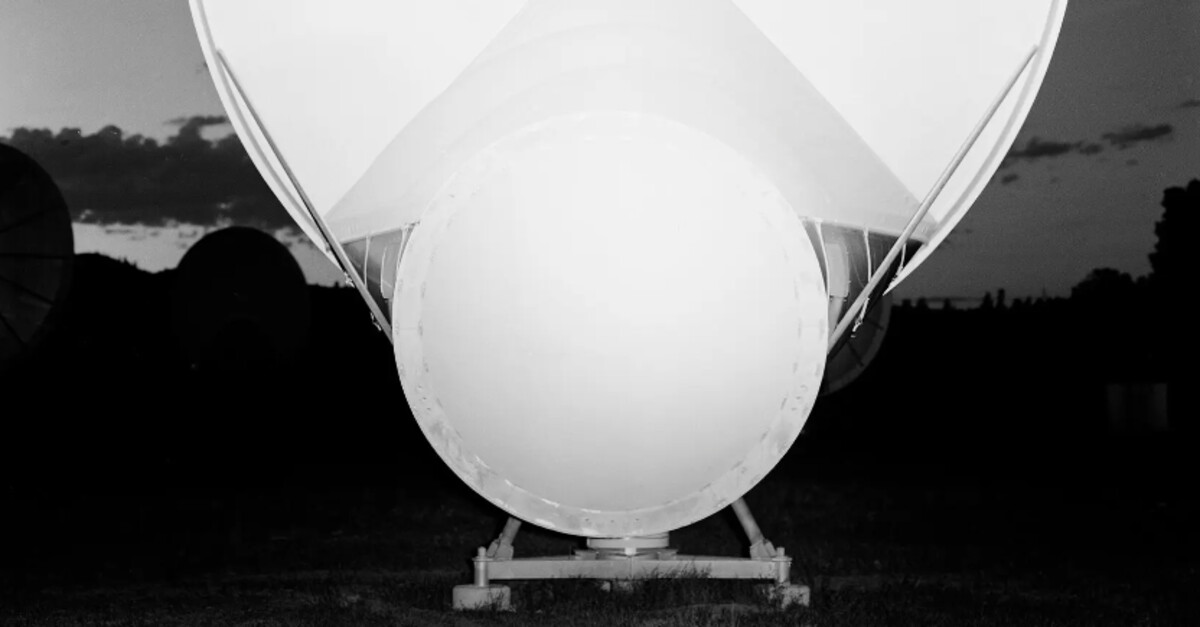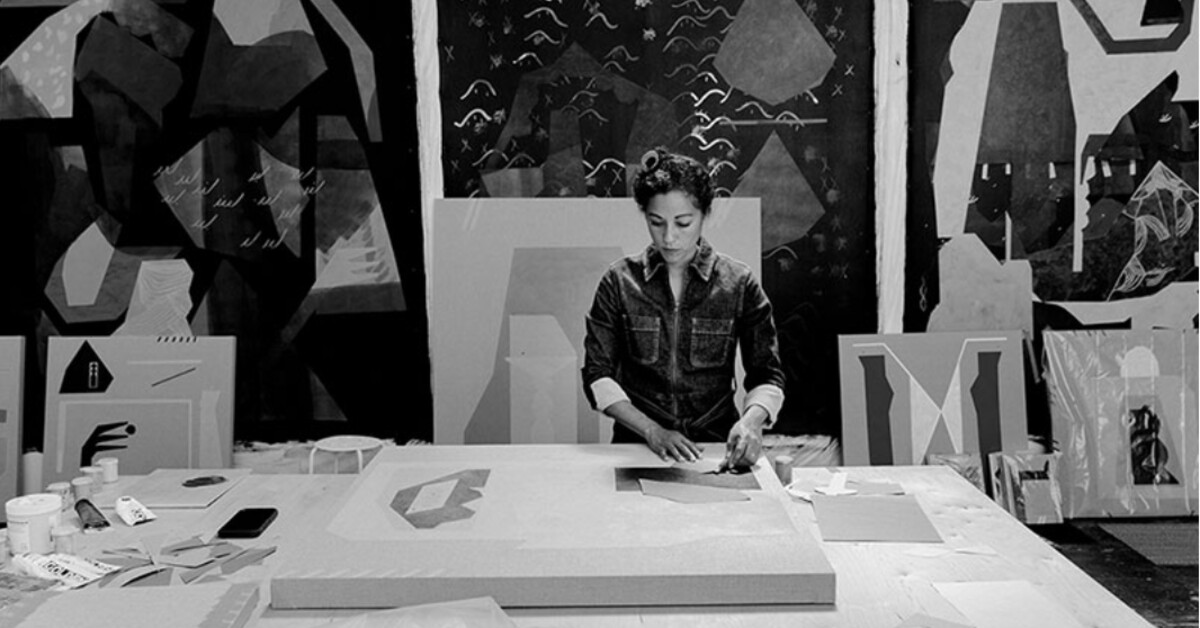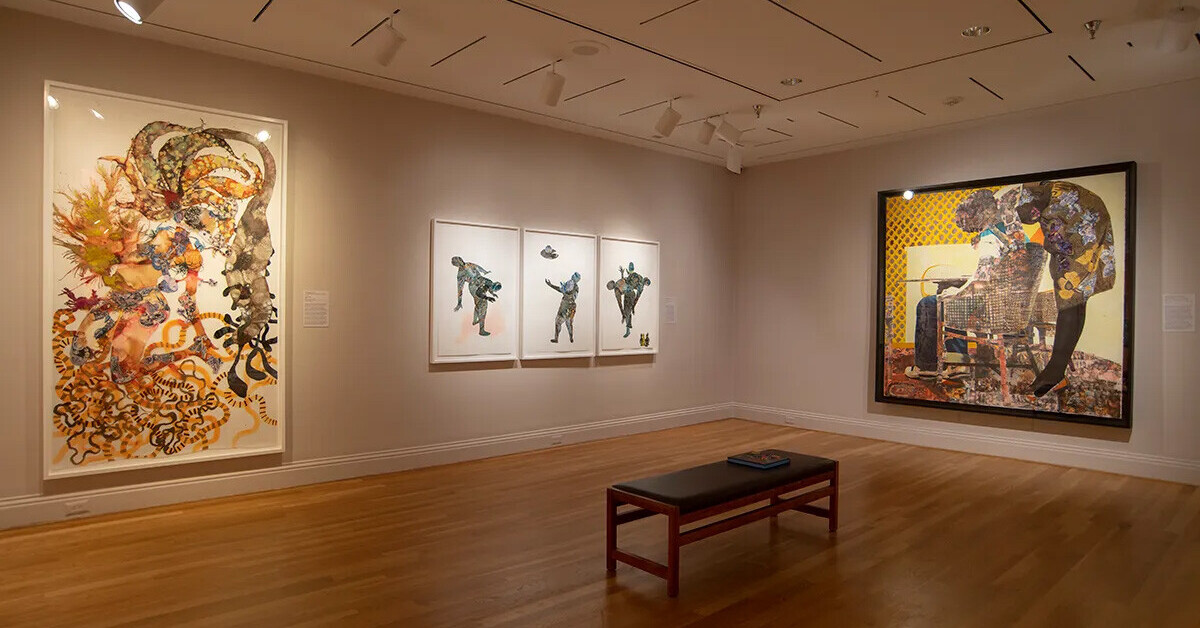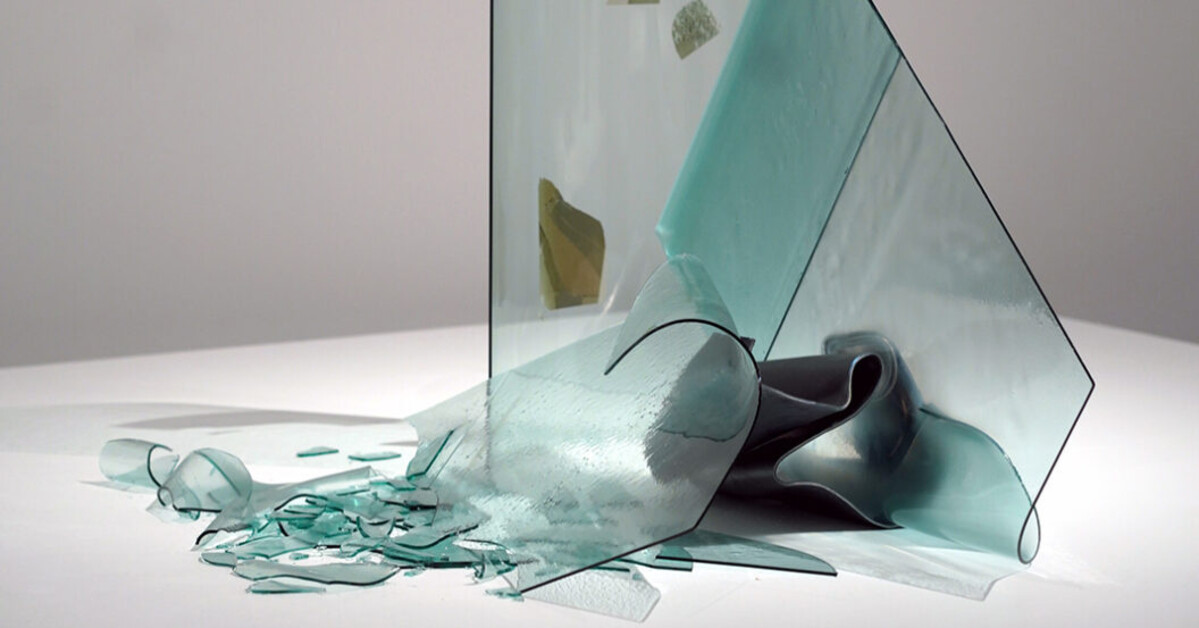New York City Roundup
e-flux / Sep 20, 2024 / by Orit Gat / Go to Original
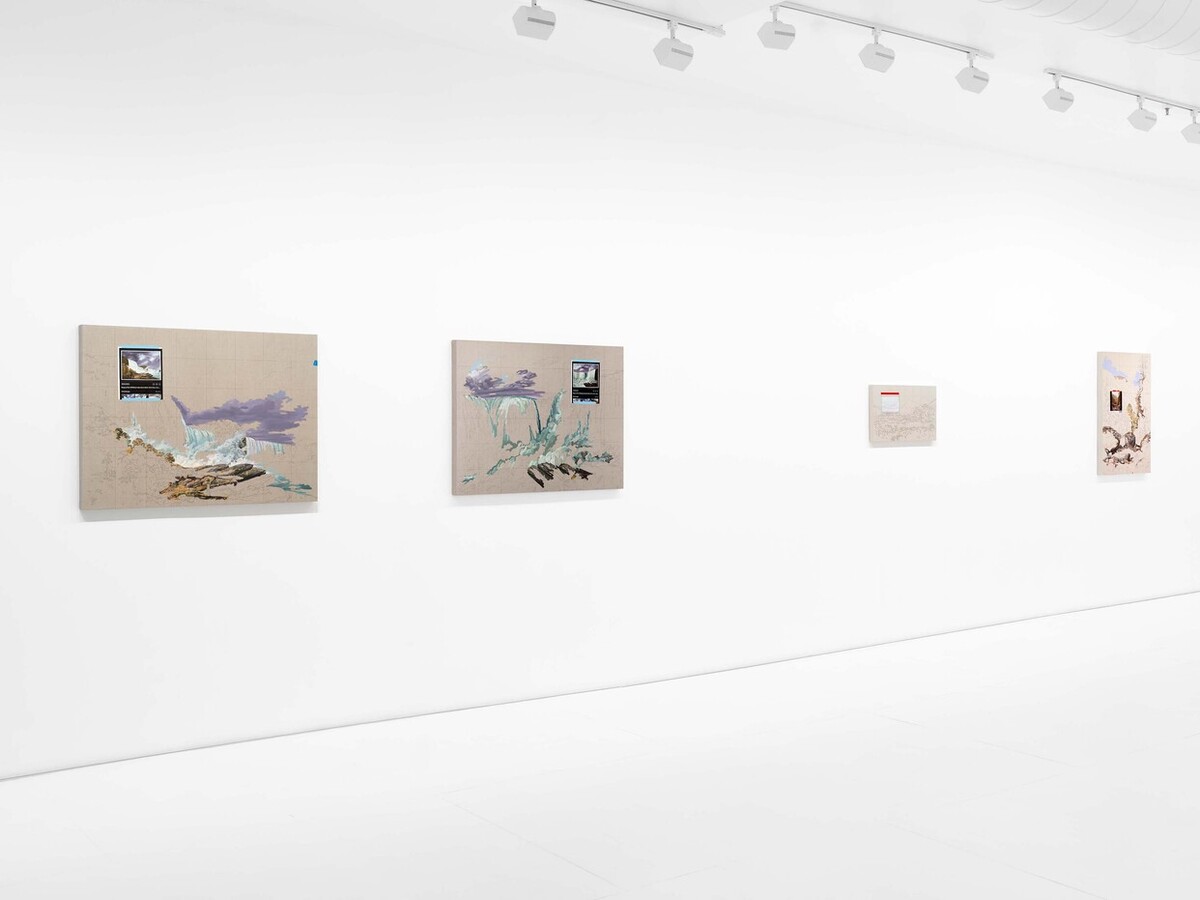
View of Anna Plesset’s “American Paradise” at Jack Barrett Gallery, New York, 2024. Image courtesy of Jack Barrett Gallery.
“American Paradise”: Anna Plesset took the title of her show at Jack Barrett Gallery from a 1987 exhibition at the Metropolitan Museum of Art about the nineteenth-century Hudson River School of American landscape painting, which featured twenty-five male artists and not a single woman. Plesset responds by researching the work of women artists of the time, applying an astonishingly skillful trompe l’oeil technique to the task of filling in historical gaps.
Her show opens with a sculpture mimicking the original exhibition’s catalogue, a perfect facsimile in oil on epoxy, aluminum, and steel placed on a plinth. Ostensibly the catalogue’s third edition (only one edition was published), the frontispiece is here replaced with a painting by a woman artist, Julie Hart Beers. In Value Study 2: Niagara Falls / Copied from a picture by Minot / 1818 (2021), Plesset paints an impeccable reproduction of the paper printout of an online image search for Louisa Davis Minot’s painting of the waterfalls, as if adhered to the canvas for reference using blue painter’s tape. The canvas itself shows the sketch and a beginning of a copy of Minot’s original. Plesset’s realism is not a remedy for historical injustice but a conceptual stop-and-start, a reminder that paradise is constructed.
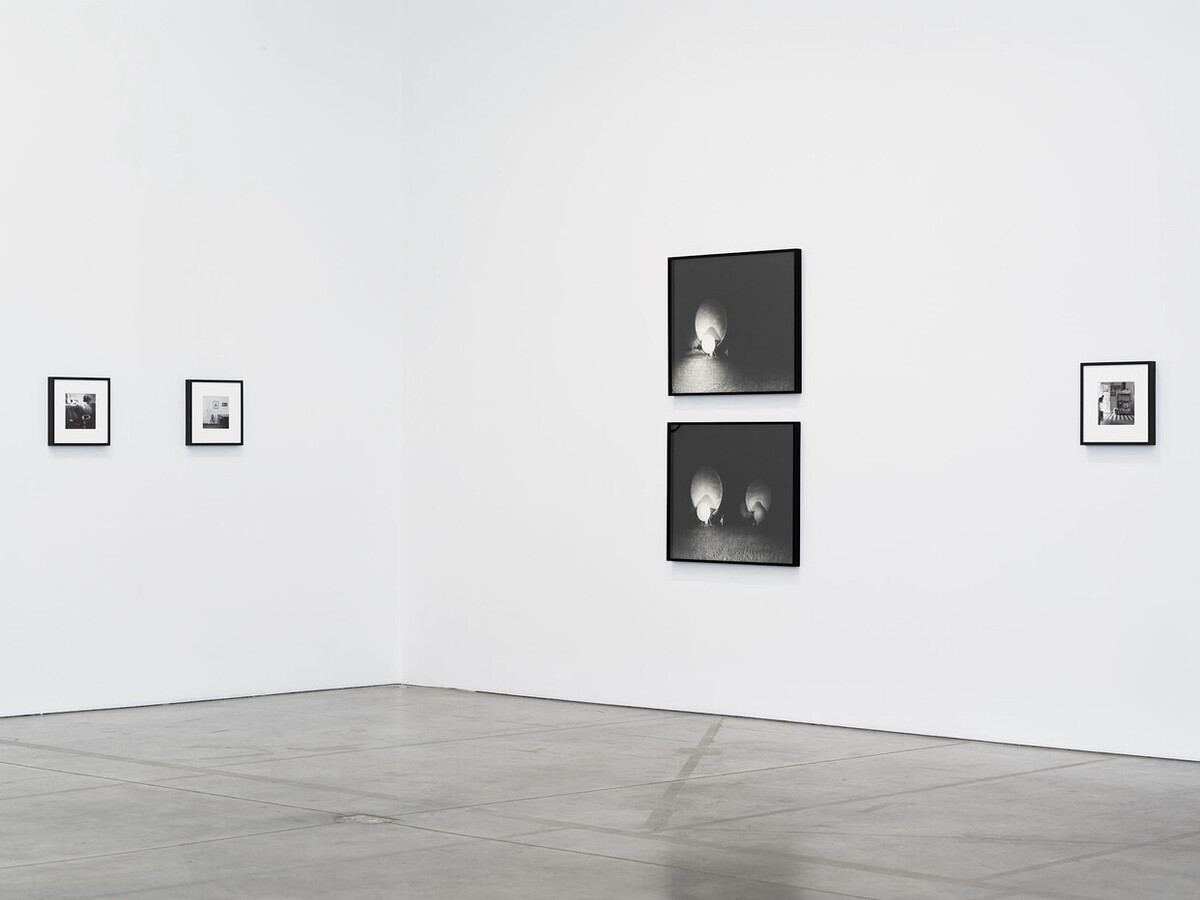
View of Joanne Leonard & Brittany Nelson at Luhring Augustine Chelsea, New York, 2024. © the artist. Courtesy of the artists and Luhring Augustine, New York. Photo by Farzad Owrang.
All landscapes tell stories. At Luhring Augustine, Brittany Nelson’s series of photographs “Allen Telescope Array” was shot in Shasta County in Northern California, where the SETI Institute has set up a system of radio telescopes searching for extra-terrestrial life. Nelson’s individual portraits of the huge telescopes, dedicated to the lonely mission of listening for something that may not be there, are grouped to look like a forest of metallic monuments to what we humans do not know about the universe. They are displayed as part of a two-person exhibition with California artist Joanne Leonard’s series of photographs from 1976–85 of domestic interiors, honing in on the intensely small details of kitchen counters, pantries, and dining tables. Separated by four or five decades, the photographs on view—straightforward, black-and-white, distinctly unpopulated—create an image of a world in waiting, beholden to a presence that may or may not exist offscreen.
The seven photos in Sofia Sinibaldi’s small show at Chapter NY were made through a process combining photography and scans, printed on tissue paper and covered with acrylic glass. The results are painterly, almost abstract, but still showing familiar traces of Downtown: the gallery’s Tribeca location is not far from where Sinibaldi lives. You can spot it all—a one-cent coin, its copper color so recognizable; a yellow taxi; a street corner—but the technique produces layered, impressionistic views of the city. No Corner, No Quarter (2024) is an intervention in the space, the acrylic film placed directly on the gallery’s back window, which overlooks a parking lot. It’s proof of concept: a site-specific work that, in lieu of depicting the city, participates in it.
Anna Rubin’s video The Gram (2024) at Maxwell Graham conjures a similar sense of the distant and familiar. Rubin attaches a GoPro camera to a homing pigeon headed from midtown back to the artist’s studio in the Bronx. It’s a twenty-six-minute journey, soundtracked by flapping wings and the whoosh of the wind. I feel like I’ve seen art about homing pigeons before—the details of their voyages a mystery to their humans, their arrival expected, still always a bit of a surprise—but here the journey feels unstable, uncertain, vulnerable. Rubin exhibits only two videos, projected onto opposite walls of the gallery. Super Gift (2024) is almost two hours long and depicts the contents of a nearby shop. Rolls of tape and toys and juicers and price stickers fill the frame, the work lasting for as long as it took to inventory the stuff for sale. Both works display a single gesture in the time it takes to make it. This simple conceit nods to experimental cinema, but its contradictions—fast, slow; looking down, looking across; a big city, a crowded interior—destabilize time and place and the camera’s exploration of them.
Another single gesture: at Hauser & Wirth, Jason Rhoades’s “Drive II” includes five cars displayed in the gallery space like found objects. A Duchampian flourish with a distinctly Los Angeles touch, Rhoades’s cars are not like John Chamberlain sculptures: it’s not about the aesthetic of the object. It’s the car itself. The show includes a video where Rhoades drives Hans Ulrich Obrist around Los Angeles and talks to the curator about the grace of the internal combustion engine and his desire to create a piece where a car would take visitors to and from the exhibition, so that the ride itself would be the work. The show looks at something so overdone—car culture in Los Angeles—and through humor, romance, and boyish enthusiasm turns it into a story about an artist’s own point of view on the world.
There is a very different text to be written about “America” and “paradise” in late 2024. But these works and their different perspectives on history, the city, and the universe suggest that art can be something other than a screen onto which to project contemporary anxieties, like a bad dream that returns every four years. Instead, they are reminders of the many different ways of seeing the world in which we live, with all its neglect and romance, concerns and optimism, movement and enthusiasm, and very busy streets.


